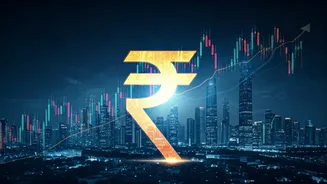Investment Rate Requirement
The EAC-PM's assertion regarding India's investment rate is quite specific. The council suggests that for India to achieve a 7% growth, the investment rate needs
to climb to approximately 34-35%. This figure serves as a crucial benchmark for the economic policymakers, indicating the volume of resources that must be channeled into the economy to foster substantial expansion. The investment rate, in this context, refers to the proportion of the country’s GDP that is dedicated to investments. This includes expenditures on capital goods such as machinery, infrastructure development, and other assets that fuel economic activities. Without this level of investment, sustained growth becomes difficult to achieve.
Growth and Its Metrics
Understanding the interplay between investment and economic growth is fundamental to grasping this recommendation. Economic growth is often measured by the rate of increase in a country’s GDP. Several factors affect GDP growth, but investment stands out as a critical driver. Investment stimulates demand, which in turn encourages increased production. As businesses invest, they create jobs, improve productivity, and facilitate the adoption of new technologies. These factors then contribute to an improved standard of living for the citizens. The EAC-PM's emphasis on the investment rate highlights the belief that a higher investment rate will translate into a robust and sustainable expansion of the Indian economy.
Implications for India
What does a required investment rate of 34-35% mean for India? This would call for significant policy changes and an increase in private and public investments. The government would likely need to encourage investment through various means, such as providing tax incentives, streamlining regulations, and investing in infrastructure. Furthermore, it might necessitate attracting foreign investment by making the business environment more favorable for international players. India must also focus on strengthening its financial markets, increasing the availability of credit, and improving overall ease of doing business. These strategies could help achieve the suggested investment rate and subsequently propel the economy toward its growth objectives.
Future Economic Strategies
The EAC-PM's recommendation is more than just a figure; it is a call to action. To implement this recommendation successfully, it is important to analyze various economic strategies and their practical implications. Policymakers should be ready to deal with potential challenges, such as inflation, fiscal deficits, and external economic risks. It is imperative to stay vigilant and adjust strategies as needed. Monitoring investment levels regularly is crucial to determine if they are on track to meet the 34-35% threshold. If not, corrective measures should be promptly implemented to ensure that the growth targets are successfully met. With strategic foresight and determined execution, India can work towards reaching this milestone, unlocking economic prosperity for its people.











